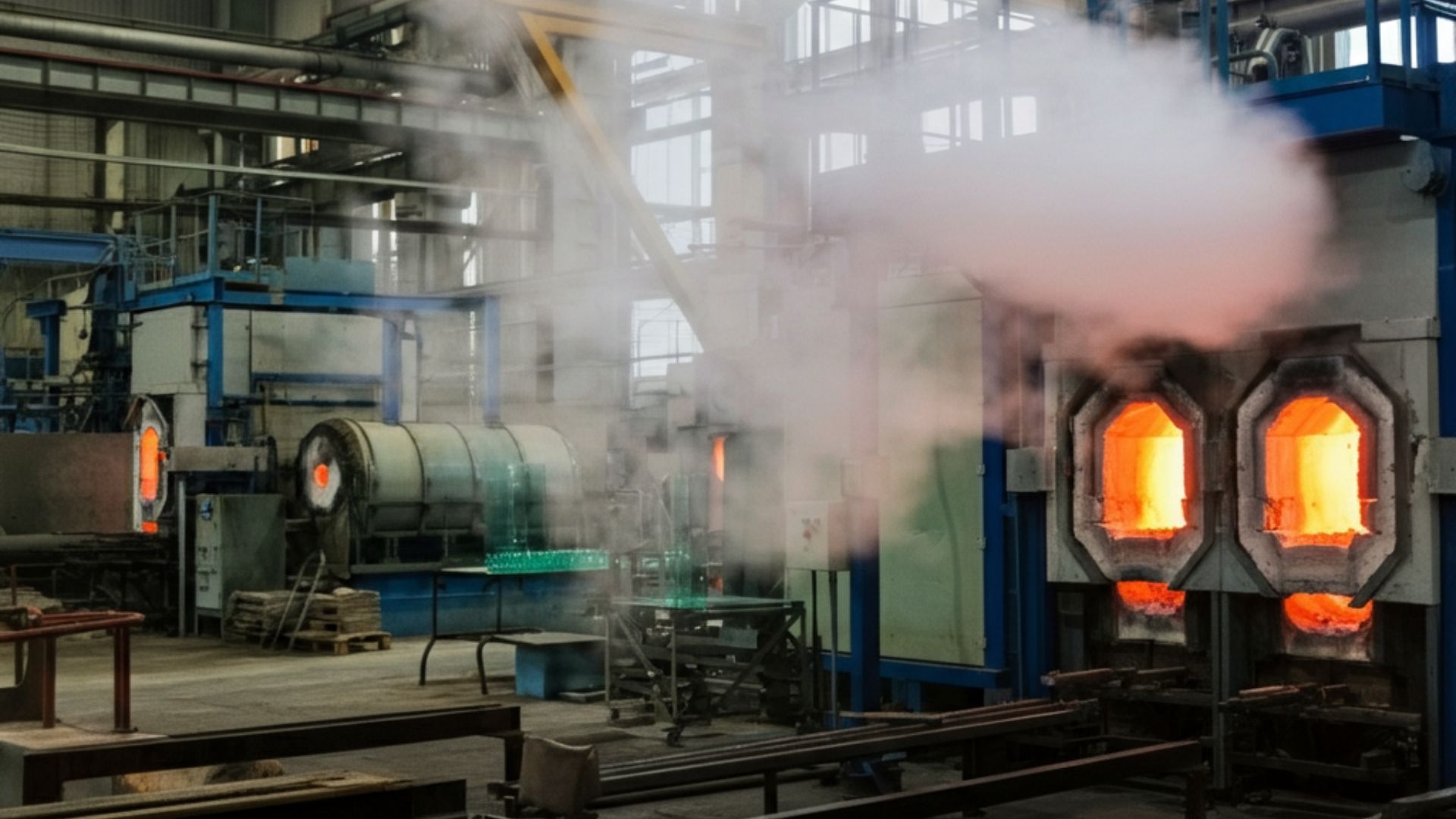Inside the Trial That Proved Hydrogen Can Fuel Eco-Friendly Glassmaking
A Clearer Future for Glass Manufacturing Understanding the Glass Industry’s Environmental Impact Glass surrounds us, from the windows in our…

A Clearer Future for Glass Manufacturing
Understanding the Glass Industry’s Environmental Impact
Glass surrounds us, from the windows in our homes to the screens on our devices. Yet, few are aware of the environmental price tag attached to its production. The glass industry is a major energy consumer, with furnaces operating at over 1,500°C to melt raw materials such as silica, soda ash, and limestone. This process also makes it one of the largest industrial contributors to carbon emissions, releasing over 86 million tons of CO2 every year.
Much of this impact stems from the energy-intensive melting process, which accounts for up to 80% of the energy used in glass production. Most of this energy comes from burning natural gas, adding to the sector’s carbon footprint. While technologies like electric furnaces and cullet (recycled glass) melting have helped reduce emissions, the industry still faces significant challenges to fully decarbonize traditional manufacturing practices.
SCHOTT’s Hydrogen Breakthrough
Amid these challenges, SCHOTT, a global leader in specialty glass, achieved a groundbreaking milestone by producing optical glass using 100% hydrogen as a fuel source. Recognized with the SPIE Catalyst Award for their efforts, SCHOTT has demonstrated that hydrogen can replace natural gas in industrial-scale glass production without compromising quality.
Hydrogen, when burned, emits only water vapor, eliminating the CO2 released in conventional glassmaking. However, incorporating hydrogen into such a high-temperature process involved overcoming significant hurdles. SCHOTT tackled this with precision-engineered infrastructure, including a 5,000 Nm³ hydrogen tank and modified furnace burners.
The transition began thoughtfully, with a four-week test introducing 35% hydrogen into the fuel mix. Encouraged by the results, SCHOTT proceeded with a three-day trial using 100% hydrogen, producing flawless optical glass. This advancement proves hydrogen’s viability as a cleaner energy source for energy-intensive processes like glassmaking.
A Model for Industry-Wide Change
This hydrogen-fueled achievement has profound implications not only for SCHOTT but for the glass industry as a whole. If hydrogen can decarbonize glass melting, it could be adapted for other manufacturing applications, including flat glass for buildings and container glass for packaging. However, broader adoption will require addressing several barriers, such as the cost and availability of green hydrogen—a cleaner form produced through renewable energy.
While the trials relied on gray hydrogen, SCHOTT’s success highlights the technology’s potential. For the industry to fully benefit, investments in green hydrogen production and distribution infrastructure must accelerate. Policy support from governments worldwide could play a critical role in reducing costs and expanding accessibility.
High Energy Use and Pollution in Focus
The broader glass industry urgently needs solutions like SCHOTT’s innovation. For every ton of glass produced, the energy demand is immense—driving significant carbon dioxide and nitrogen oxide emissions. While advances like oxy-fuel burners and furnace electrification have improved efficiencies, the overall progress remains insufficient to meet global climate goals.
Cullet recycling, the process of recycling glass, offers another impactful solution. Each 10% increase in recycled glass content reduces energy use by roughly 3% and CO2 emissions by 4–10%. Yet, only an estimated 33% of glass containers in the United States are recycled, compared to Europe’s 80% recycling rate. Bridging this gap in regions like the U.S. could contribute significantly to decarbonization efforts while also saving energy and resources.
What This Development Means for Manufacturing
If SCHOTT’s hydrogen innovation gains traction, it could inspire other industries reliant on high-heat processes, such as cement and steel production, to adopt similar methods. By demonstrating that cleaner fuels can deliver the same results as fossil fuels, SCHOTT is helping to lay the groundwork for broader industrial transformations.
Hydrogen isn’t the only avenue to explore. Expanding electrification in glass melting—powered by renewable energy—could offer extraordinary efficiency gains. Hybrid systems that combine electric melting with hydrogen burners also hold promise, especially as renewable energy becomes more accessible.
Applying Technology Today for a Cleaner Tomorrow
The lessons from SCHOTT’s achievement highlight actionable steps industries can take today. Simple measures like increasing cullet recycling and optimizing thermal efficiency in furnaces could lower emissions immediately. Meanwhile, investments in hydrogen production and cleaner energy sources will support long-term sustainability goals.
For consumers, supporting products made with these greener methods could create a ripple effect, influencing manufacturers to prioritize sustainability. Advocacy for meaningful policy changes to lower barriers for green hydrogen adoption will also be crucial.
Perhaps the most important takeaway is that technological innovation, like SCHOTT’s hydrogen-fueled production, provides a glimpse of what’s possible. Change doesn’t happen overnight, but every step toward reducing emissions in energy-intensive industries brings us closer to a future where manufacturing and environmental stewardship go hand in hand. By continuing to invest in clean energy and collaborative solutions, we can redefine how glass—and other materials—are made, ensuring a healthier planet for future generations.
What's Your Reaction?





























































